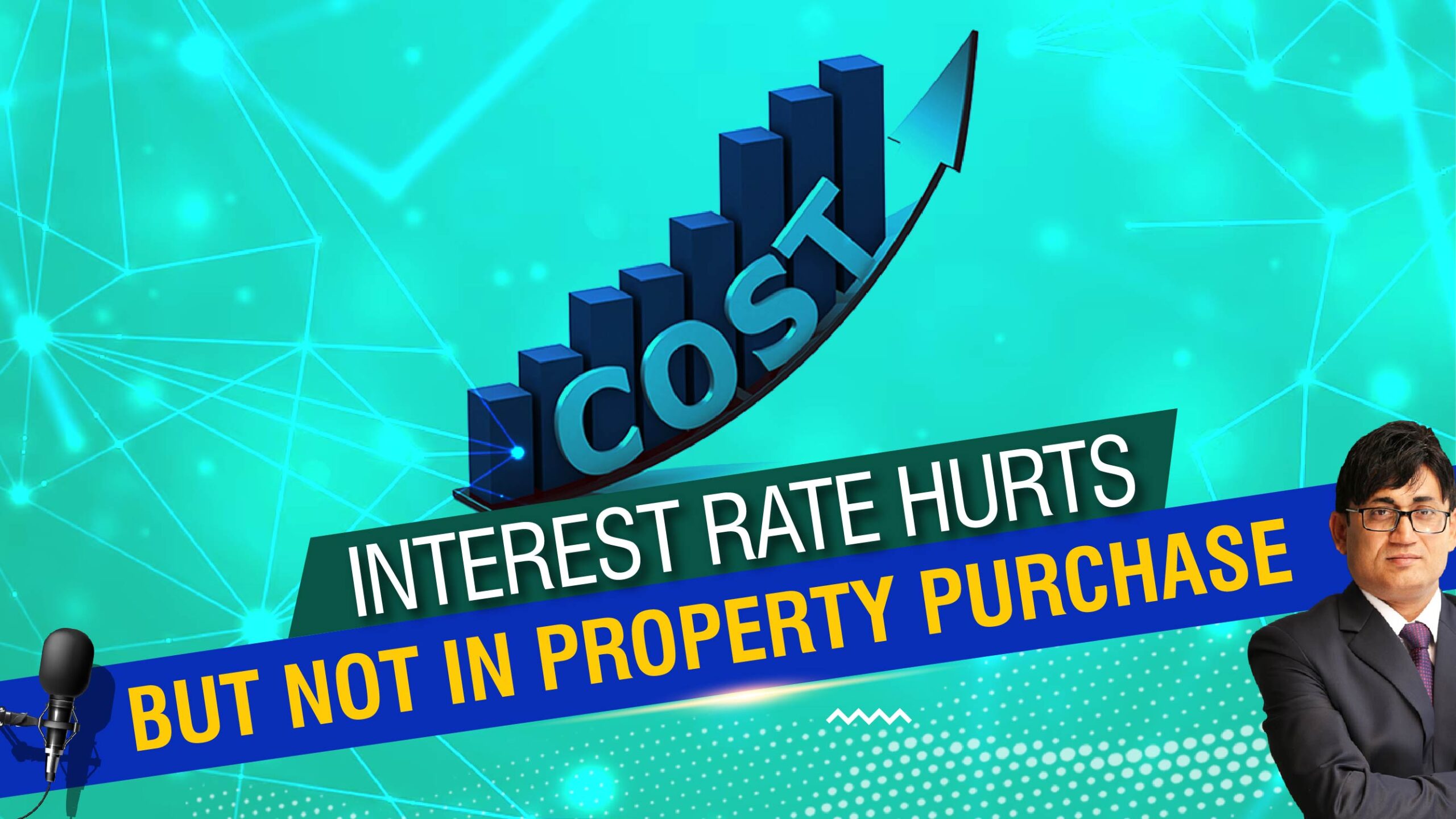Circle Rate, also known as Ready Reckoner Rate or Guidance Value is in the news. Maharashtra Government has hiked the Ready Reckoner rates; Gautam Buddha Nagar in Uttar Pradesh has proposed to hike Circle Rate up to 70%; and there are reports of Circle Rate hike from many other cities as well. The Supreme Court has also critically talked about mismatch between Circle Rate and actual market value of properties.
I am Ravi Sinha and in the last one week, I am repeatedly getting the question on my mailbox. People wish to know who all are beneficiaries of mismatch in Circle Rate and Market Value; and whether it helps or hurts to keep the Circle Rates lower than the actual market price. More importantly, whether hike in Circle Rate would lead to higher property prices.
Let me address the issue straight. Circle Rate, that is the benchmark that property can’t be registered below that fixed price by the government, has deliberately been kept lower in this country. Real estate in this part of the world has always been known for evasion of Stamp Duty and adjustment of Black Money. The powers to be, whether politicians or bureaucrats, know it well that land is the only place where they can adjust their ill-gotten money. With m0re transparency and stringent norms, one can no longer adjust Black Money in Gold or Stock Market. So, lower land value than its fair market price is what suits them.
But the issue is not as simple as that. While the lower Circle Rate than its Fair Market Value may rob the States with Stamp Duty, it suits all the stakeholders of property market. Those with black money enjoy the game; builders take cash and purchase higher taxed GST items in cash; and the buyers too get benefits of this cartel of cash transactions. Now you may wonder how? How many average salaried class home buyers have the black money?
The real issue with the average home buyers in India is not adjusting black money in real estate purchases. They have no black money at all. But the lower Circle Rate than actual property prices do help them in paying cash and saving the GST and Stamp Duty over the adjusted cash amount.
The real issue here is not desire to pay in cash but Triple Taxation in real estate purchase. Suppose a home buyer has INR 1 crore as earned money with him. Now it goes without saying that one must have paid 30% tax over this amount, if it is a bankable transaction. But for him Double and Triple Taxation in home purchase is 5% GST and 7% Stamp Duty. If there is a difference between Circle Rate and Fair Market Price, one would pay some amount, say INR 20 lakh in cash. Mind you! This is not Black Money but his Hard-Earned and Taxed Money but by paying INR 20 lakh as cash one is saving 5% GST and 7% Stamp Duty. So, a cash transaction of INR 20 lakhs saves him INR 2.40 lakhs. That is the whole game why everyone loves cash in the business of real estate.
Now the second question is whether Circle Rate hike would hike the property prices. As of now, with unsold inventory, the developers have very little room to hike prices and make property even more unaffordable. But moving forward, when they buy fresh land parcels at higher prices, they have only two options left – either to reduce their profit margins or else hike property prices.
So, the critical question with Circle Rate hike is to what extent the property prices would be costlier in Top Tier cities. Well, in term of Price to Income Ration, where the Global Benchmark is 5 Years of Gross Income, India already has an average of 11 years with some cities exceeding way beyond 30 years. Can property prices be hiked further?
Where will the unsustainable property prices go from here? Aren’t we heading for a serious housing crisis? What are the solutions? Solutions are not as simple as mere sloganeering of creating 100 plus Smart Cities. India seriously needs to think creating more Tier II & III cities as Investment Magnet Cities and Job Catchment Zones. But then if only dreams were horses. Indian housing crisis is for real and sooner the policy makers admit it to address the crisis the better it would be.
Indian real estate in general, and housing in particular, is today only meant for top 1% of demography and the country has a huge challenge to accommodate the rest of the population to cities where they could earn livelihood. One can only hope that the crisis, already very alarming, doesn’t reach to a point of being unaddressable. While it is fancy to welcome hike in Circle Rate that would bridge the gap between Circle Rate & Market Value, one must keep in mind that it is also a tool to make the houses costlier and unaffordable.
Ravi Sinha
X : RaviTrack2Media
Ravi Sinha is a journalist with over two decades of cross-discipline media exposure. He is the CEO of real estate thinktank group Track2Realty. He has been writing extensively on the real estate sector for more than a decade now. Evaluation of real estate brand performance is his core domain expertise and he has immense insight into consumers’ psychograph. He has conceptualised Track2Realty BrandXReport as India’s 1st & only objective & non-paid brand rating journal that is industry-accepted benchmark of brand equity & ranking of the Indian real estate companies.
Track2Realty is an independent media group managed by a consortium of journalists. Starting as the first e-newspaper in the Indian real estate sector in 2011, the group has today evolved as a think-tank on the sector with specialized research reports and rating & ranking. We are editorially independent and free from commercial bias and/or influenced by investors or shareholders. Our editorial team has no clash of interest in practicing high quality journalism that is free, frank & fearless.
Subscribe our YouTube Channel @ https://bit.ly/2tDugGl





